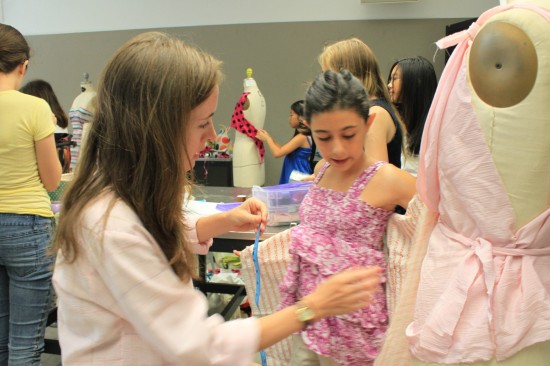
Being a fashion designer is more than just thinking up adorable outfits and reading fashion magazines all day. According to professionals working in the industry, entry-level designers can expect to work extremely long hours for low starting wages. There’s also a lot of competition in the field, especially for those just starting out. But fortunately, there are plenty of resources out there available for aspiring designers.
According to the US Bureau of Labor, most employment opportunities for fashion designers are in California and New York. But that doesn’t mean that all higher education fashion programs are. There are numerous associate degree, B.A. and B.F.A. programs in fashion design across the country. You can find a comprehensive list of fashion schools and programs by state in this directory of fashion schools. A word to the wise: while many students in traditional college programs and majors may have some flexibility in their class schedules, college level art and studio programs are often three to five hours long. So a full semester of courses means you might be in class all day, everyday, during the week or even on weekends, not including time in the studio spent on homework and class projects.

- Maxine Hoover, “Pink Plum.” Age 17, Grade 12. 2010 Silver Medal, Fashion Art Portfolio.
Paying for education can be a challenge, but there are also various scholarship opportunities available in fashion. And don’t forget the Fashion category of the Scholastic Art & Writing Awards – the Awards are the largest source of scholarships for creative teens in the US!
If you’re looking to spruce up your fashion portfolio but don’t have the time or money to take extra classes, trying Googling free online classes. Several colleges make a selection of courses available online for free, like MIT’s Introduction to Costume Design. Another helpful tip is to keep a sketchbook with your ideas, which college admissions officers are often interested in seeing. A sketchbook can chronicle your creative process, which can be just as important as the work you produce. Keep a swatch of fabric, an image, or the work of a designer you admire close at hand…you never know when inspiration will strike.
And finally, you may be wondering what it takes to apply for a college fashion program. There’s a lot of advice out there for that, but one high school senior went so far as to create a blog about applying for fashion programs and offers her “non-expert” tips and advice.
